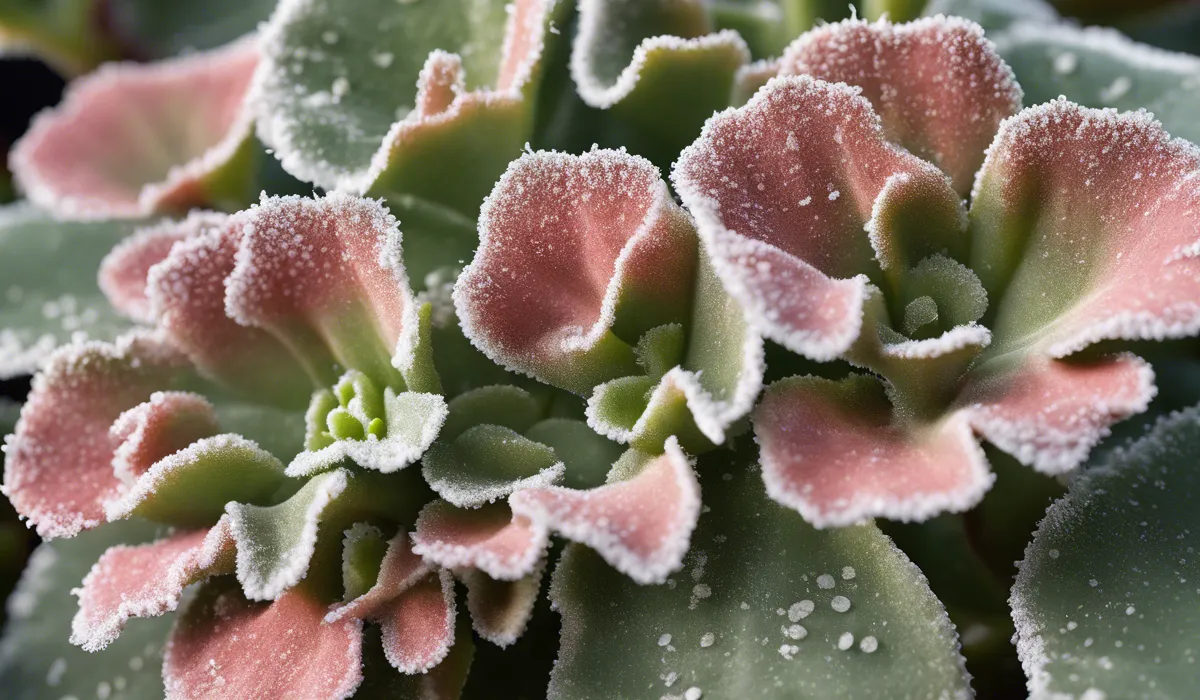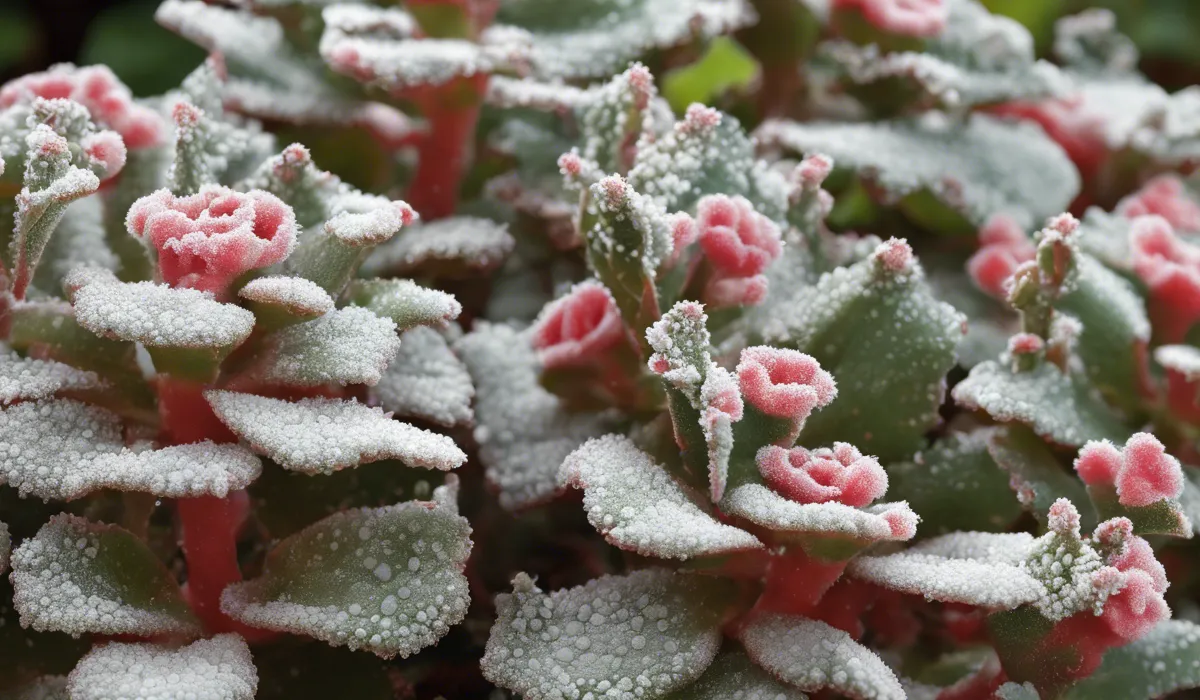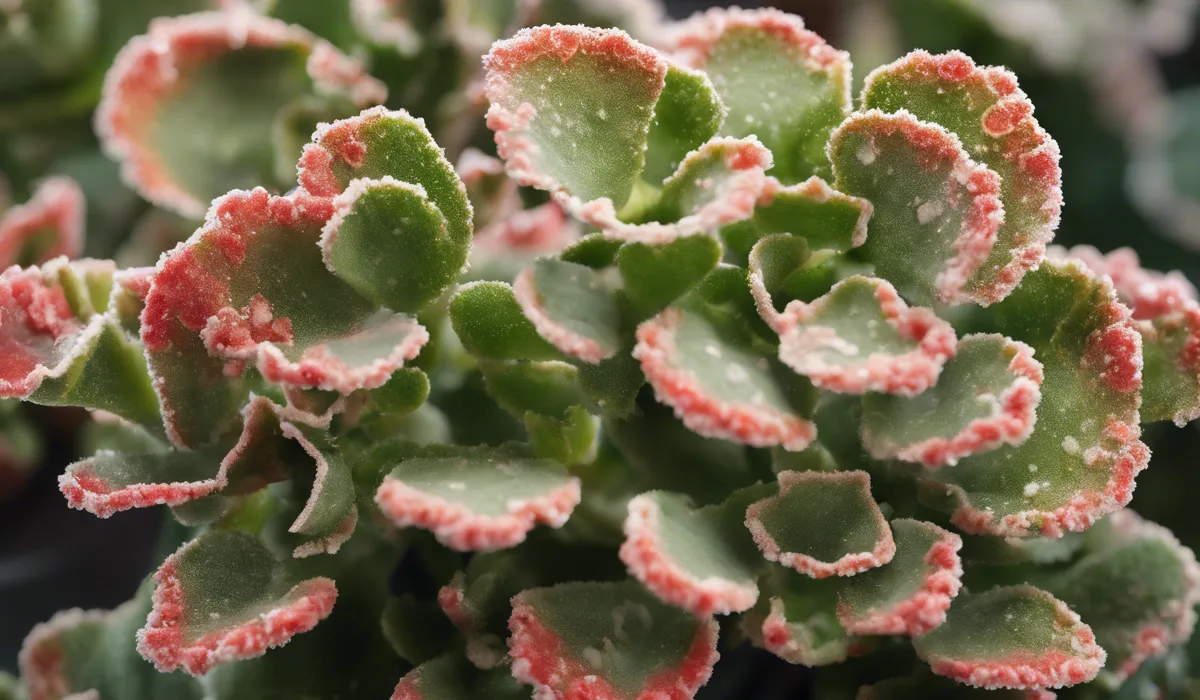To treat powdery mildew on Kalanchoe, remove affected leaves, increase air circulation, and reduce humidity. Apply a fungicide or a mixture of baking soda and water as a spray. Ensure the plant receives ample sunlight.
Identification of Powdery Mildew on Kalanchoe

Description of Powdery Mildew Appearance
Powdery mildew is a common plant fungus that manifests as a distinctive white or gray powdery coating on the surface of leaves, stems, and sometimes flowers.
The powdery substance is actually a mass of fungal spores that form on the plant tissues.
This coating may start as small, circular spots that can expand and merge to cover large areas of the plant.
Typical Locations on the Plant Where the Fungus Can Be Found
The fungus prefers young, succulent growth, so it often appears first on the new leaves of the Kalanchoe.
However, it can also be found on the undersides of mature leaves and can spread to stems and flowers if left unchecked.
The location of the fungus is key to understanding its behavior and finding the right treatment strategy.
Signs and Symptoms of a Powdery Mildew Infection
Infected plants may display a range of symptoms including leaf yellowing, distortion, and a general weakening of the plant.
In severe cases, the leaves may turn brown and dry up. The powdery mildew may also cause flowers to become distorted or fail to develop properly.
Effects of Powdery Mildew on Plant Health
Powdery mildew interferes with photosynthesis, the process by which plants make their food, which can stunt growth and weaken the plant over time.
If the infection is severe and left untreated, it can lead to the death of the Kalanchoe.
Prevention Strategies for Powdery Mildew

Appropriate Watering Techniques to Reduce Humidity
Watering your Kalanchoe correctly is vital in preventing powdery mildew. Aim to water at the base of the plant to keep the leaves dry and to water in the morning so excess moisture can evaporate throughout the day.
Avoid overwatering as this can increase humidity levels around the plant, which is conducive to fungal growth.
Ensuring Proper Air Circulation Around Plants
Good air circulation is essential for keeping the foliage dry and reducing the risk of powdery mildew.
Make sure your Kalanchoe is not overcrowded by other plants and consider using a small fan to improve air flow in indoor environments.
Optimal Light Exposure to Discourage Fungal Growth
Kalanchoe plants need plenty of light to stay healthy. Place them in a location where they receive ample sunlight throughout the day.
This not only promotes strong growth but also discourages the damp, shaded conditions that powdery mildew thrives in.
Use of Resistant Kalanchoe Varieties
If you live in an area prone to powdery mildew, consider planting resistant varieties of Kalanchoe.
Some species and hybrids are less susceptible to fungal infections, which can save you a lot of trouble in the long run.
Treatment Options for Infected Kalanchoe Plants

Removal of Affected Leaves and Plant Parts
As soon as you notice signs of powdery mildew, remove the affected leaves and any other infected plant parts.
This will help to reduce the spread of the fungus. Be sure to dispose of these parts properly and sanitize your tools after use to prevent further contamination.
Home Remedies Like Baking Soda Sprays and Milk Solutions
A home remedy that can be effective against powdery mildew is a baking soda spray. Mix one tablespoon of baking soda with a half teaspoon of liquid soap and a gallon of water.
Spray this solution on the plants once a week to prevent and treat mildew infections.
Milk solutions, with a ratio of 40% milk to 60% water, are also known to help boost plant immunity and fight against powdery mildew when sprayed on the leaves.
Chemical Fungicides Appropriate for Use on Kalanchoe
If the infection is severe or if home remedies are not effective, you may need to resort to chemical fungicides.
Look for products that are labeled safe for use on Kalanchoe and follow the application instructions carefully.
Fungicides containing sulfur, neem oil, or potassium bicarbonate can be effective against powdery mildew.
Best Practices for Applying Treatments to Avoid Harming the Plant
When applying any treatment, whether homemade or chemical, it’s important to do so in a manner that won’t harm the plant.
Always test a small area first and apply treatments in the evening or on cloudy days to prevent leaf burn. Ensure thorough coverage, including the undersides of leaves where mildew often starts.
FAQs About Treating Powdery Mildew on Kalanchoe
What are the first steps to treat powdery mildew on a Kalanchoe plant?
The first steps include removing affected leaves, increasing air circulation, and reducing humidity around the plant to prevent the spread of powdery mildew.
Can I use a homemade remedy to treat powdery mildew on Kalanchoe?
Yes, you can use a homemade spray made from a mixture of baking soda and water to treat powdery mildew on Kalanchoe.
How important is sunlight in treating powdery mildew on Kalanchoe?
Ample sunlight is crucial for the health of the Kalanchoe and can help prevent and combat powdery mildew by promoting a dry and less hospitable environment for the fungus.
Should I apply a fungicide to my Kalanchoe if it has powdery mildew?
Yes, applying an appropriate fungicide can be effective in treating powdery mildew on a Kalanchoe plant.
Is it necessary to isolate a Kalanchoe plant with powdery mildew?
Isolating an infected Kalanchoe can help prevent the spread of powdery mildew to other nearby plants.
Final Thoughts
Efficient management of powdery mildew on Kalanchoe involves proactive leaf removal and environment adjustments to boost air flow and decrease humidity.
A fungicide application or homemade baking soda solution can be sprayed to combat the fungus. Sunlight exposure is crucial for the plant’s health and resistance to such issues.
